Pachacuti led the Incan Empire at the height of its power and influence. Known as the “Earth-shaker,” he moved heaven and earth to bring prosperity to his people. In Civilization VI: Gathering Storm, I simply call him “The Mighty Mountain Man of the Andean Lands.” I mean, just look at those muscles! I don’t know if this is a Deity game or a dating game.
In any case, I consider the Inca an “A-Tier” civ just like Mali, the Maori, and France led by Eleanor of Aquitaine (or FranLeanor). And this is with good reason. The Incan civilization is a production and population powerhouse. Take a look at the civ’s abilities in the video below:
Civilization VI: Gathering Storm – Inca Perks
Mit’a (civ ability) – citizens can work mountain tiles; mountain tiles provide +2 production and +1 food for each adjacent Terrace Farm
Qhapaq Ñan (leader ability) – domestic trade routes gain +1 food for every mountain tile in the origin city; researching the Foreign Trade civic lets you build Qhapaq Ñan unique improvements (mountain tunnels allowing units to enter and exit via another tunnel)
Terrace Farm (unique improvement) – farms that can be built on desert, plains, or grassland hills; provides +1 food per adjacent mountain tile; +2 production per adjacent aqueduct; +1 production if adjacent to fresh water (without aqueduct)
Warak’aq (unique unit; replaces Skirmisher) – stronger ranged attack compared to Skirmisher; can make an additional ranged attack if you have movement points left
If you’ve taken note of these uniques, then there’s just one word to describe what makes the Incan civilization unbelievably powerful: Synergy. All of these perks point to maximizing your growth and production as you stay safely in your mountain strongholds.
For this playthrough, I chose the following settings:
- Deity difficulty
- Standard speed
- Pangaea – Large
- Four opposing civs
- Ancient Era starting point
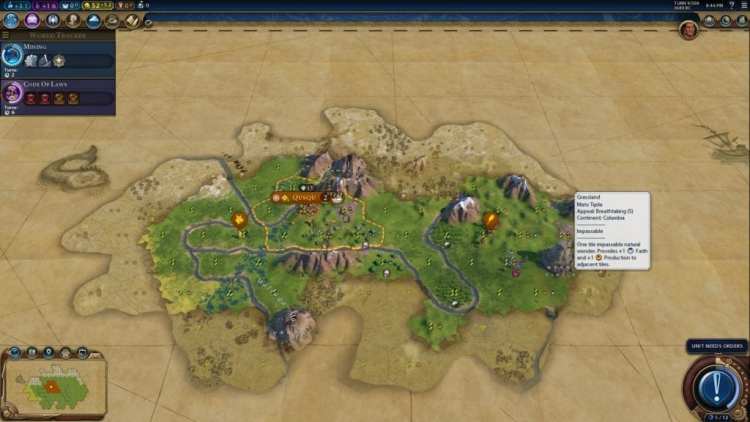
This is a bad start: Look, a natural wonder! Cool, right? Too bad you’re not surrounded by wonderful tiles that actually matter.
Good Start Versus Bad Start
To understand how to best use the Inca, one must first become familiarized with their perks detailed above. You need mountains — lots and lots of mountains. You also need hills — lots and lots of hills. Oh, and you want those hills surrounded by or adjacent to mountains. This ensures smooth sailing (or spelunking) all throughout your run.
If you do lack these terrain features, then the game will become more challenging. Without hills, you’re not building those Terrace Farms. Without those mountains beside them, you’re not getting amazing yields.
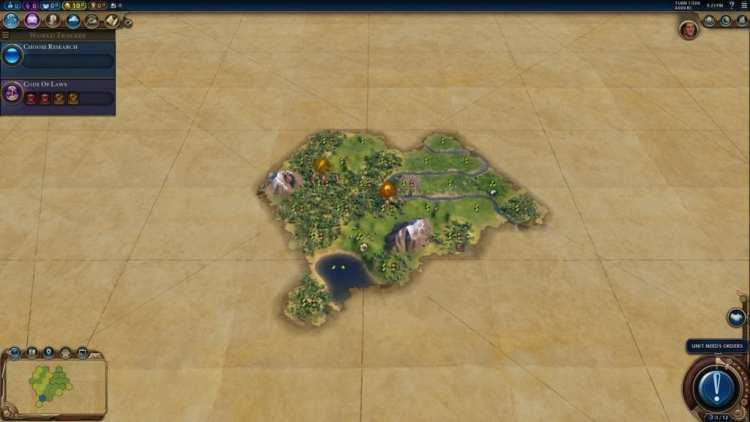
Another bad start: You’ve got hills and mountains, but you seriously need those Terrace Farms as early as possible, and that won’t happen when you’ve got jungles.
Outside of the actual yields, these features also provide extra defensibility — whether from man-made threats or natural ones. Floods from rivers won’t bother your improvements on hilltops, and a flood of AI troops will crawl before they reach you.
As you can see in those two images above, those are bad starts. We can’t make the most out of our unique perks. Who cares if there’s a natural wonder nearby when you’re woefully lagging behind, right? Also, you don’t want to be surrounded by hilltop jungles (at least for your starting city). That’s because you’ll need Bronze Working to remove jungle tiles and we can’t wait that long to start building our Terrace Farms.
Compare the above to this start here and you’ll understand why Pachacuti and the people of the Andes and modern-day Peru have been blessed by nature:
Opening Moves
Now that we have an ideal start location, we can finally begin our playthrough. That gold mine will be extremely helpful in the long run since the Inca will lag behind. Pachacuti’s cities might be made of gold, but he’s no Mansa Musa.
Normal hill tiles next to mountains mean we could start plopping down our Terrace Farms. This will lead to insane growth for our cities. Population growth means more citizens to distribute evenly, or towards a specific goal in mind. It means more production, science, or gold and faith when you have the requisite buildings or policies.
I was lucky enough to get a free builder from a nearby tribal village, and the Cliffs of Dover natural wonder was also a few tiles away (perfect for my second city). To make traversing my lands easier, I also started creating more Qhapaq Ñan tunnels. Beware, though, because the enemy can also use them. Eventually, I would explore my nearby surroundings, discovering a few city-states and my immediate neighbor to the south, China.
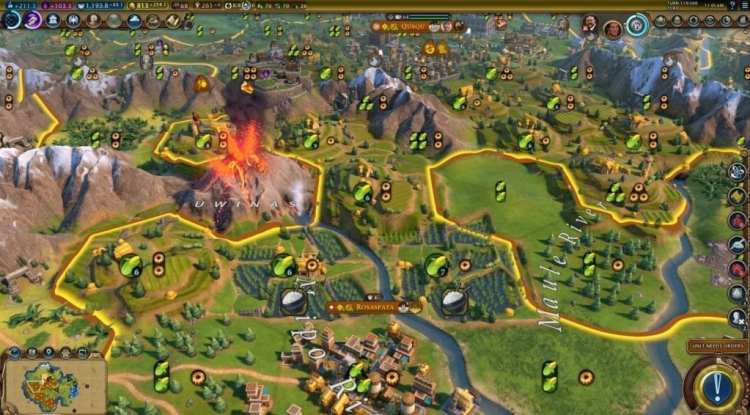
Qusqu/Cuzco will have unrivaled growth, and volcanic eruptions will give us better yields from our farms.
Wonderful!
Remember that lesson in population + production? On Deity difficulty, Pachacuti’s bonuses in Civilization VI: Gathering Storm can almost nullify the AI’s advantages since you can easily catch up. Imagine recruiting units — including settlers — within a couple of turns? You can have your empire slowly stretch across the map. My civic cards/policies were focused on gold and science generation, and I barely needed ones with production perks since my population handled everything.
Higher production also means faster building construction, especially wonders. Your primary goal is to research Engineering to build the Machu Picchu. The majestic citadel and bastion was built by Pachacuti himself. Its mountain adjacency bonuses for Commercial Hubs, Theater Squares, and Industrial Zones in all cities become indispensable when playing as the Inca.
Apart from the Machu Picchu, other wonders you could consider grabbing would be the Pyramids (free builder, extra builder action), the Hanging Gardens (15 percent growth in all cities), and the Petra (food, gold, and production for desert tiles in that city) but only if you settled next to the desert.
The Potala Palace (extra diplomatic policy slot), Forbidden City (extra wildcard policy slot), and Big Ben (extra economic policy slot, extra 50 percent of your treasury added) would also help. The Ruhr Valley which greatly boosts production in a city isn’t even that necessary when the Inca are mass producing as early as the Classical Era.
Governors And Religion
Your choice of Governor is integral to how your game pans out. For the capital Qusqu (or Cuzco), Magnus was my top candidate. His promotion that prevents the loss of population when recruiting a settler lets your city keep growing.
Liang, who has a promotion that can mitigate the damage from disasters, might be helpful if you’re next to an angry volcano. Reyna, meanwhile, can be used in larger cities for the extra gold. You might also want Pingala for the science bonus. Just a note — I didn’t bother with culture or faith.
Speaking of faith, my choices for the “Inti” religion (Inti being the Incan sun god) were:
- Fertility Rites Pantheon – 10 percent city growth
- Religious Community – shrines and temples provide +1 housing
- Tithe – +1 gold for every four followers
- Pagoda – +3 faith, + 1 housing
- Holy Order – missionaries and apostles are 30 percent cheaper to purchase
Other options which I didn’t pick or were already taken:
- Earth Goddess Pantheon – +1 faith for tiles with charming or better appeal (tiles next to mountains have high appeal by default)
- Work Ethic – +1 percent production for each follower
- Wat – +3 faith, + 2 science
Work Ethic would’ve been amazing due to the number of religious followers you can have via population alone, especially when you prolong your games. Take a look at this screenshot from Reddit user The_King_Of_Salem who managed to hit 333 production in his capital:
To Arms!
Of course, no Deity game would be complete if we didn’t play aggressively. Pachacuti is a swole fella, and you can easily flex your muscles in Civilization VI: Gathering Storm when using him.
Qin Shi Huang Di was playing passively for the most part. I made my move thanks to the Warak’aq. This unique unit replaces the skirmisher (which is the scout’s next upgrade). You can effectively get two ranged attacks, decimating enemy units easily. It almost seems poetic that I’ll use the Warak’aq against the First Emperor since it’s like the Chu-Ko-Nu archer (China’s unique unit from Civilization V).
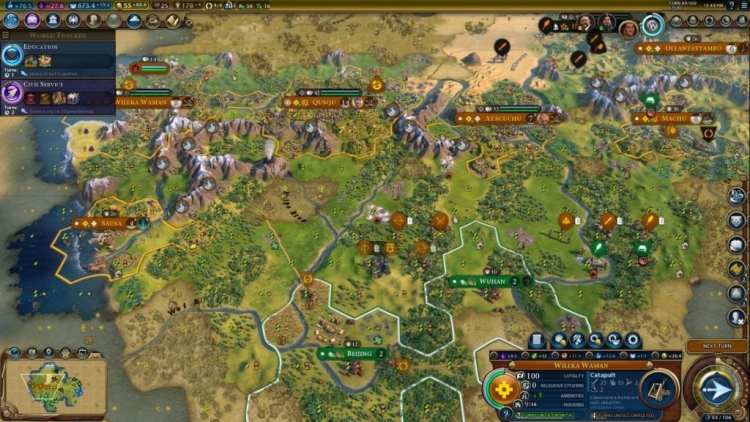
China didn’t have walls yet. My Warak’aq would make short work of enemy units and cities without taking damage. My catapults were being readied for future conquests as well.
With China taken out of the equation, I set my sights further east. That’s where I discovered the Rough Rider himself, Theodore Roosevelt. His big stick might as well be a walking cane since I bullied him into submission.
By turn 150+ I only had a couple of AI opponents left. Darius and Cleopatra were still arguing, and they weren’t planning on attacking me. Thanks to Terrace Farms and mountains, I had populated cities churning out units, buildings, and Great People every few turns. They still had swordsmen and cuirassiers, and I had field cannons and artillery.
With not much else left to do, I just sent a couple of builders over to start making more Qhapaq Ñan in the mountains near their territories.
Wide Is Tall, Tall Is Wide
Overall, Pachacuti and the Inca offer a straightforward but terrain-dependant path to victory. Before I took out Darius and Cleopatra, I resigned from the game to check out the graphs.
My science generation started slow but it climbed higher as my cities grew and I captured more territory. By turn 150+ my science and production were unmatched.
It’s all about going “wide,” expanding into rich, rewarding territories, and going “tall” by having bigger and more populous cities. Just plop Terrace Farms everywhere and let nature do the rest. Your mountain and hill tiles, Waraq’ak, and Qhapaq Ñan offer tactical and strategic advantages as well.
With unassailable and bountiful lands, you’re touching the heavens and leading the Inca to fortunes in Civilization VI: Gathering Storm. The only question that’s left is how long those fortunes will last. After all, we’ve got the April update to look forward to.

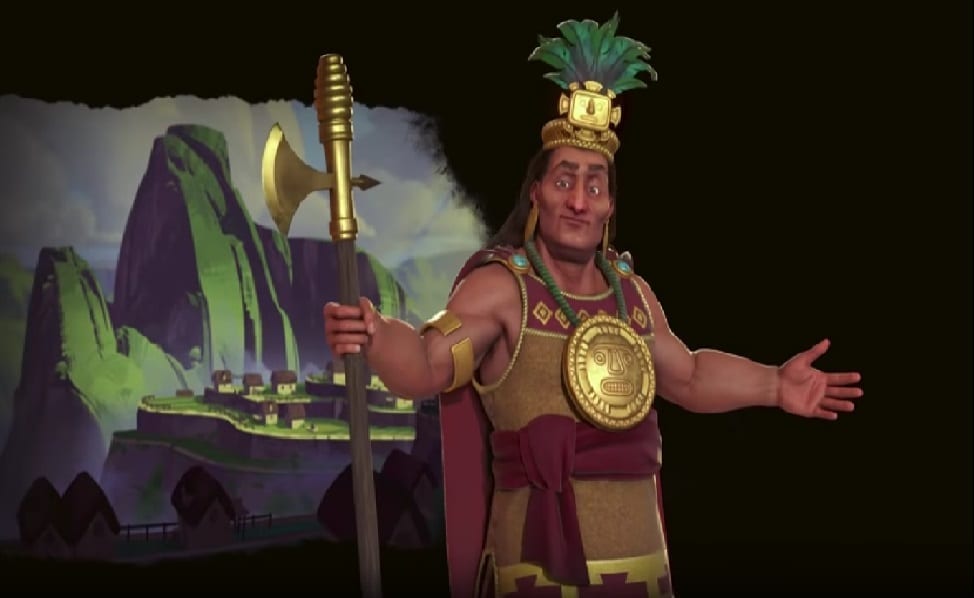
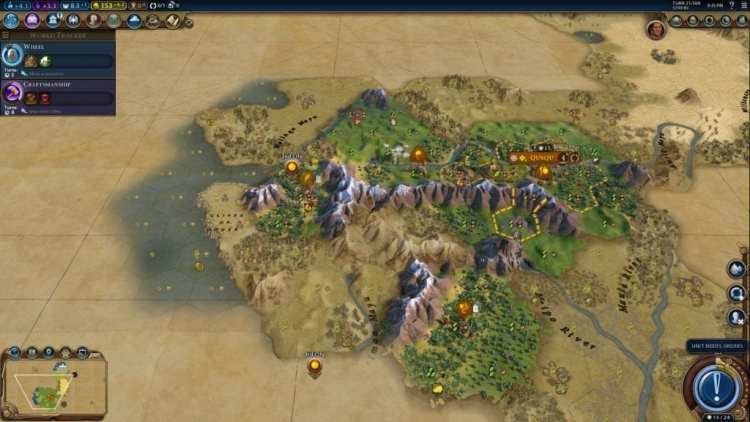
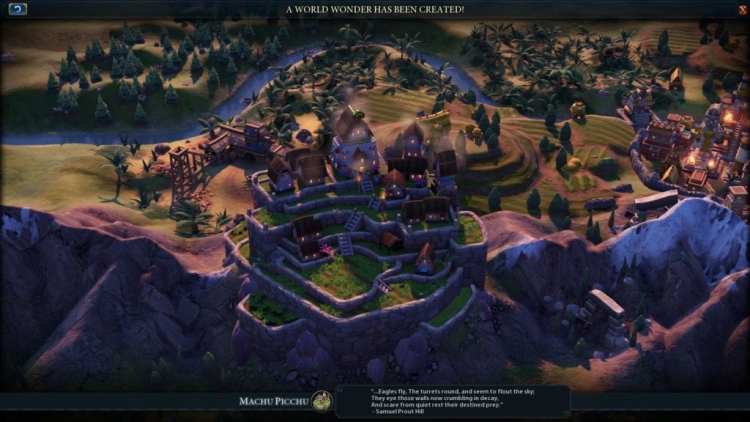
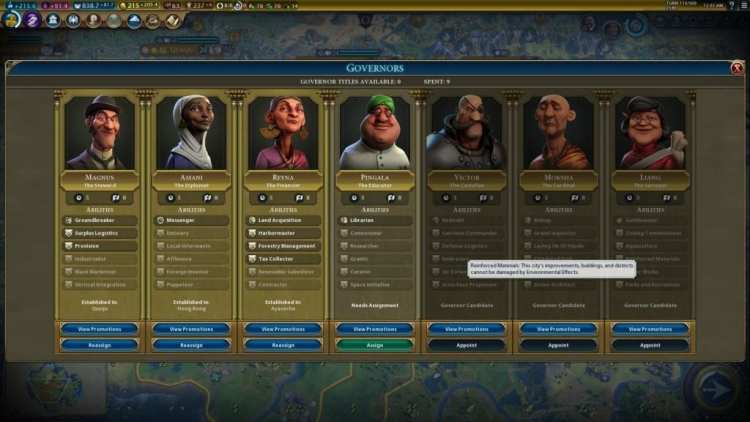
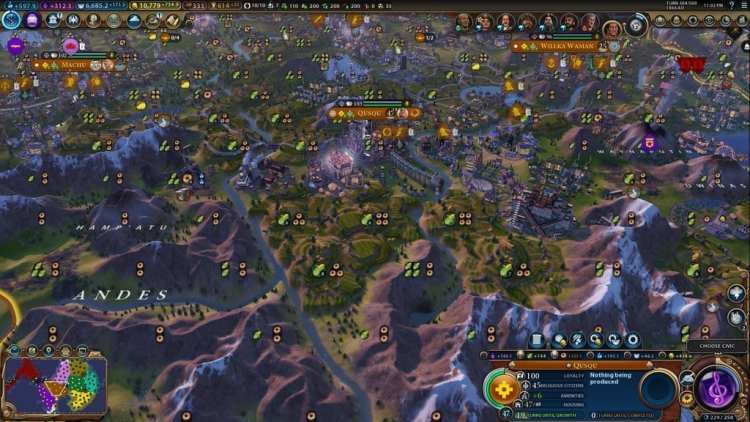
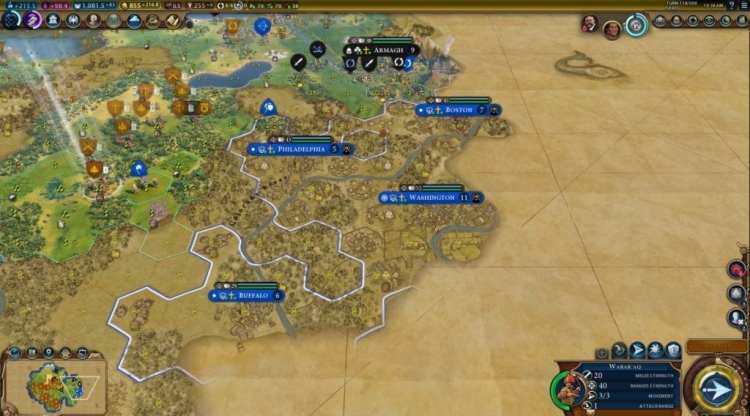
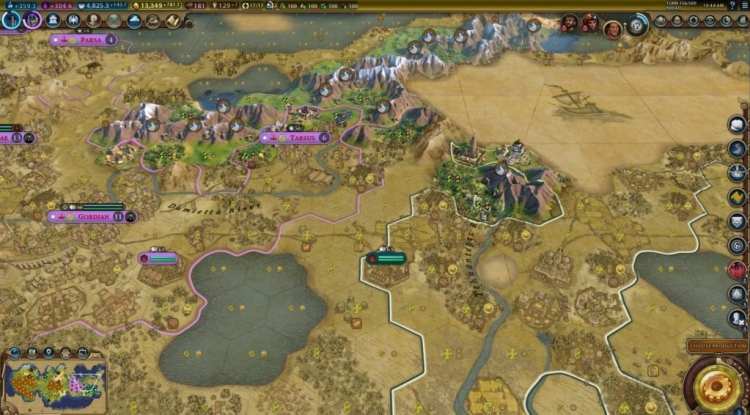
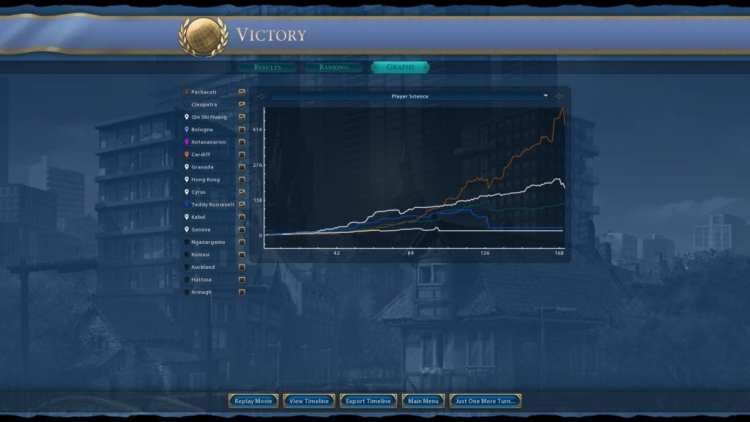





Published: Mar 31, 2019 04:26 pm